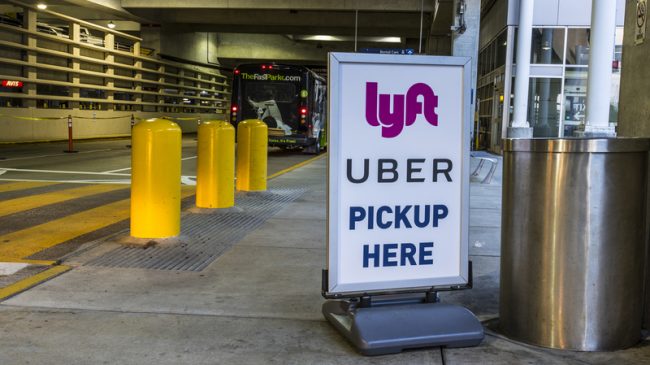While ridesharing companies try to offer cost-effective transportation choices to California residents, California regulators respond by using outdated laws to block this emerging technology. The California Public Utilities Commission (CPUC) recently told Uber, Lyft and Sidecar that their new carpooling services are illegal because the companies’ current licenses to operate in California do not allow them to charge passengers on an “individual-fare basis.” This is akin to a law that prohibits restaurants from splitting the check for a meal. The CPUC said that the only option for these companies is to petition the legislature to change the law, even though the CPUC changed its own rules two years ago to allow these three companies to operate legally in the state.
This most recent conflict reveals how state transportation regulation in California is slowing innovation. Before the new ridesharing companies entered the market, the CPUC issued transportation licenses to either “passenger stage corporations,” which can charge fares on an individual basis, or “charter-party carriers” (TCPs), which can charge fares based only on time-of-use or distance-traveled. Uber, Lyft and Sidecar operate under a newly created license called a “transportation network company,” a subcategory of TCP with heavier regulatory requirements, such as vehicle inspections and driver background checks. The CPUC deems carpooling services illegal because “charter-party carriers” are not allowed to charge on an individual-fare basis.
Although the Commission portrays itself as simply enforcing the law, in reality it serves as an unnecessary middleman. The Commission’s letter to Uber reveals that if these ridesharing companies want to innovate, they first need the government’s permission. In this case, companies need permission to experiment with a new business model that uses technology to match riders traveling similar routes, resulting in less congestion and emissions.
Ridesharing has benefits far beyond competing with taxi companies. It could also play a part in relieving traffic congestion which is a real problem in Southern California. According to the Texas A&M Transportation Institute 2012 Urban Mobility Report, each year drivers waste 61 hours sitting in Los Angeles traffic. Along with other hindrances, congestion costs add up to around $1,300 per driver. The trucking industry in the Los Angeles metropolitan area alone incurs an additional $2.29 billion in shipping costs due to congestion. And most Southern California residents commute to work by car. According to the 2013 American Community Survey, 84 percent of commuters drive to work in the Los Angeles metropolitan area, and 74 percent drive alone.
Policymakers have used traditional methods to cut down on gridlock. For example, the Californian government has dedicated nearly $5 billion to infrastructure projects that relieve congestion through the Traffic Congestion Relief Program (TCRP). TCRP began in 2000 and allocates funding to projects such as lane widenings and construction of HOV lanes. Over the next fiscal year alone, the state of California will spend over $10 billion on transportation. While new roadways can reduce congestion, transit has a very limited affect. Therefore, gridlock is poised to remain an issue for Californian cities, even as billions are slated to be spent on improving infrastructure.
By allowing ridesharing, California would have an additional tool to reduce congestion that does not require one dime of public subsidy. Many of the drivers stuck in traffic congestion would likely be interesting in ridesharing. Ridesharing is cheaper for taxpayers and for the commuters sharing rides. Lyft claims that carpooling passengers can save up to 50 percent cheaper than commuting alone. Some types of ridesharing services are even less expensive; Uber’s carpooling service can be up to 40 percent cheaper than its lowest-priced service, UberX.
The potential cost savings of new ridesharing services is enormous. In the Harvard Business Review, William D. Eggers and Paul Macmillan estimate that $21 billion in congestion costs and 757 million commuter-hours could be saved nationally if 15 percent of those who drive would carpool or rideshare. While this enormous mode shift is unlikely, every little bit helps. Further, ridesharing aligns with CPUC’s mission to “stimulate innovation” and “promote competitive markets” while pursing the goals of “environmental enhancement and a healthy California economy.”
As Lyft’s carpooling service comes to Los Angeles, home to some of the nation’s most gridlocked traffic, the question remains whether the CPUC will stick to its mission or revert to a more unfriendly approach to innovation, as it once did by issuing cease and desist notices to these very same ridesharing companies.
